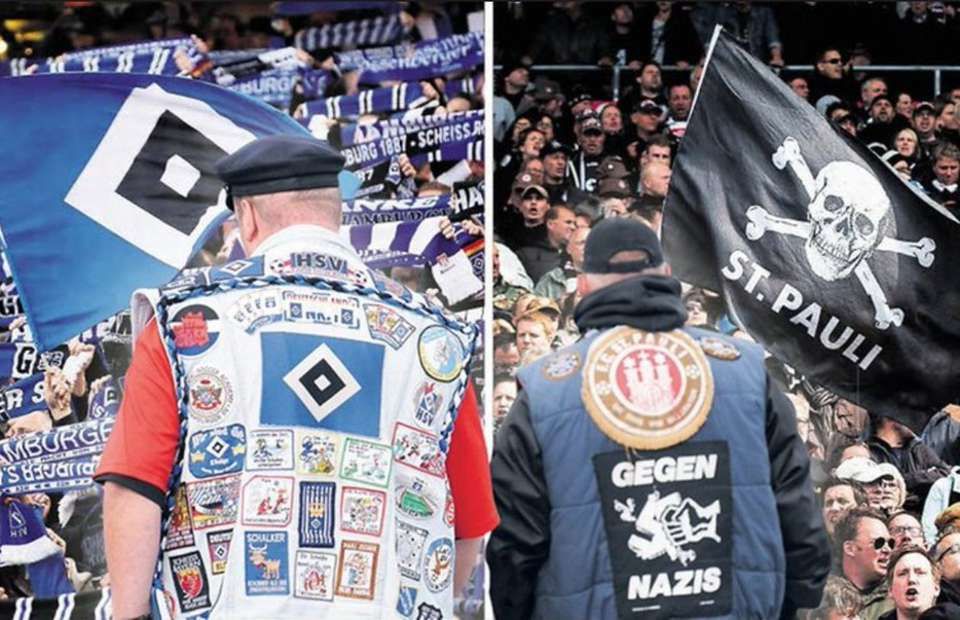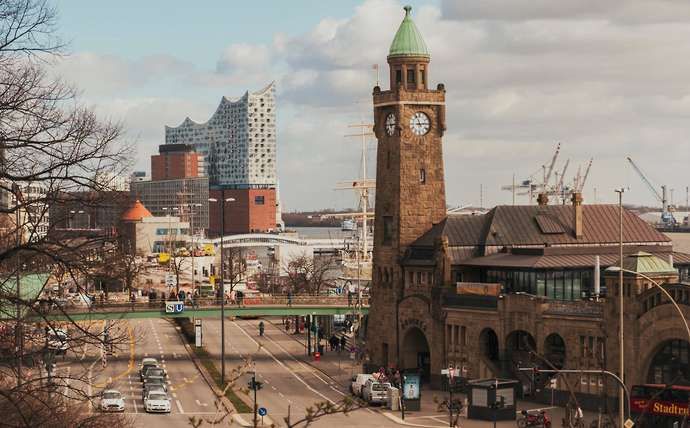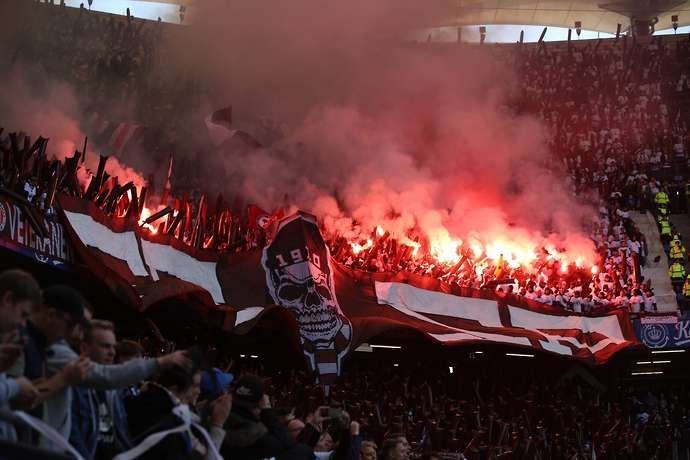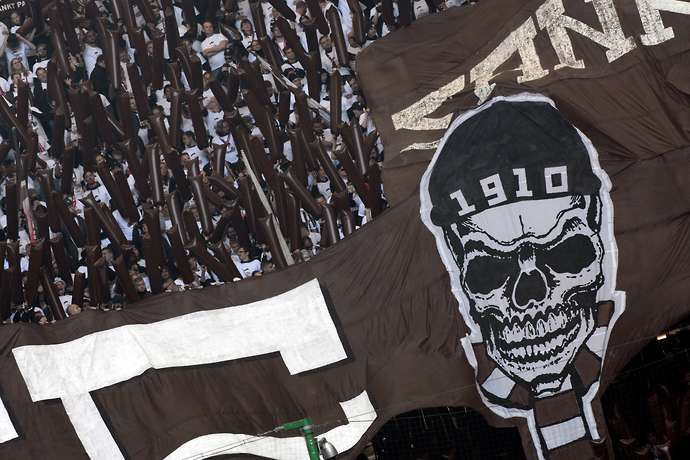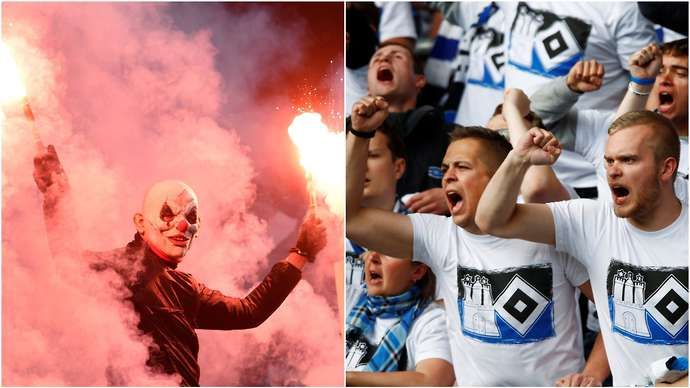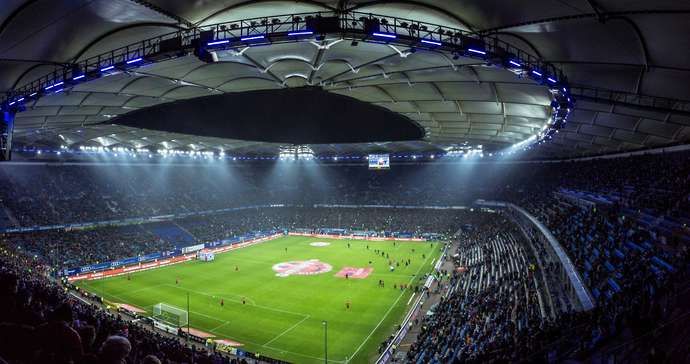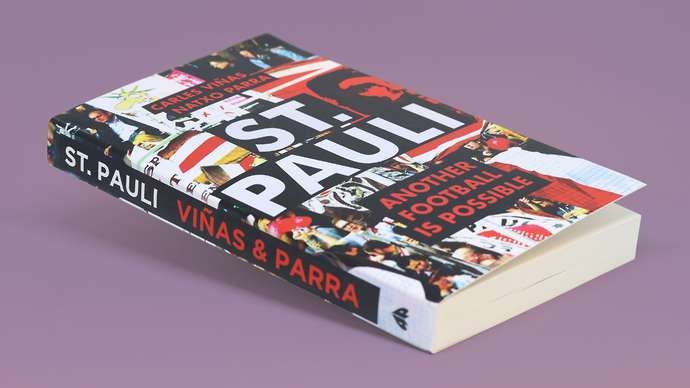This Friday marks the return of the Hamburg Derby, one of Germany’s fiercest and most fascinating rivalries.
It’s a derby steeped in history and tradition. Football fans fly in from all around the world to watch this fixture. But why is Hamburg special? Which clubs make up this epic contest? Why is their rivalry so intense? And who’s going to win come Friday?
Below, we’ll answer all that and more. With expert insight from Carles Viñas, co-author of St. Pauli: Another Football Is Possible, GiveMeSport gets right to the heart of this rivalry and explores a tale of politics, fan activism and football.
What’s Hamburg like as a city?
Based in the north of the country, Hamburg is Germany’s second-largest metropolis (after Berlin) and houses its biggest port, which sees a great deal of trade and commerce run through the city. This gives Hamburg a distinct international flavour, with residents representing a melting pot of nationalities.
Unlike Munich, Hamburg is less clean-cut and more rough around the edges. It operates on counterculture and locals parade a rebellious, fiercely anti-establishment attitude. In short, its people like to live how they want, not how they’re told.
Consequently, Hamburg has a bit of a sin city vibe. It indulges various vices, from petty crime to drugs and prostitution. It’s fair to say the city dances to its own beat, which is aptly reflected in Hamburg’s thriving music scene. Multiple genres have homes here, from iconic punk rock venues to open-air electronic dance festivals.
The city’s skyline is dominated by an eclectic mix of architectural design. At ground level, it’s divided by the river Elbe, which splits Hamburg in two. There are many different districts throughout the city, and it’s these territorial divides that form the basis of the rivalry between its two most prominent clubs.
Which clubs contest the Hamburg Derby?
Located in the north-west of the city, Hamburger SV are a historic household name in football. The club were a European behemoth throughout the 1970s and ‘80s, winning three Bundesligas, two German Cups and the European Cup over those two illustrious decades.
Known as Der Dino (The Dinosaur), HSV were the only club to have never been relegated from Germany’s top flight — a record that stood until 2018, when they finally dropped into the second division after five seasons of narrowly avoiding relegation.
HSV have remained in the 2. Bundesliga ever since, which has led to the rebirth of Hamburg Derby, with both the city’s clubs playing in the same division and contesting matches twice a season.
On the port side of Hamburg lies a district named Saint Pauli. It’s a working class neighbourhood that takes great pride in its blue collar roots. It’s also where the city’s red light district resides, and is a hub for Hamburg’s politically left-leaning citizens.
Its football club, St. Pauli, have been around since 1899 — spending most of their existence in the second division — but it wasn’t until the 1980s that the club really took off. Many locals from the emerging punk rock scene began to get behind the team and imparted their liberal ideals onto them, leading to a new wave of fan activism.
From there, St. Pauli adopted a skull and crossbones motif as a symbol of defiance, which has since become a mainstay and can be seen everywhere on matchdays at the Millerntor Stadion, via flags, tifos, kuttes and even tattoos.
Why do St. Pauli have such a cult fan following?
Over the past 40-odd years, St. Pauli have forged a reputation as a politically engaged club that stands in stark contrast to many in modern football. The fans have an active say in club affairs and are fiercely anti-racist, anti-sexist, and anti-homophobic.
“In a hyper-competitive global sport, where success is paramount, a team with a modest track record has been able to bring tens of thousands of fans around the world together,” Carles Viñas tells GiveMeSport.
“In today's football, where the emphasis is on winning at all costs and, above all else, generating money — essentially the extreme commercialisation of modern football — fans feel excluded.
“For many, this isn't their model. They are people who have lived another football, who have suffered, cried and rejoiced with another way of understanding this sport. And it's these people who now feel a little bit orphaned. St. Pauli, to a certain extent, take football’s heritage and come a little closer to that longed-for version of the game.
“The fact fans can give their opinion about certain actions or decisions taken by the club is crucial. Especially now we’re seeing more and more clubs disappear due to economic reasons or bad management, particularly when they end up in the hands of a magnate or oligarch who has no connection with the club.
“The way St. Pauli fans have managed to have a big impact on a professional club, with a budget of tens of millions of euros, is something unusual in modern football and has attracted plenty of admirers across the world.”
Why do St. Pauli and HSV hate each other?
Further to the obvious geographical divide, HSV vs St. Pauli really boils down to a clash of ideologies. HSV have seen their reputation tarnished in the past by far-right groups attaching themselves to the football club, and it’s something St. Pauli have taken great offence to.
“There are various factors: territorial, economic, ideological, it is a cumulative thing,” Viñas explains. “St. Pauli are often laminated for their region’s organised crime scene. They’re also criticised for being too idealistic, and supposedly believing they are morally above others.
“Conversely, HSV have historically had problems with radical ultras groups, however this has been changing in recent times with the adoption of anti-racism campaigns by a segment of HSV supporters.”
This is a rivalry built on class, regional and political divides. It’s a classic case of David vs Goliath: a traditional superclub up against the perennial outsiders.
With HSV revelling in successes of yesteryear, St. Pauli are more proud of their achievements off the pitch, and hold their rivals up as a symbol of everything they stand against in modern football.
Who’s expected to win this Friday?
On the 30th October at 5:30pm (U.K. time), the latest edition of this fascinating rivalry will get underway at the Volksparkstadion. HSV are currently top of the 2. Bundesliga with a 100 percent record, having won all five of their opening matches this season.
By contrast, St. Pauli sit in eight, with three draws, a win and a loss to their name. After five gameweeks, the table acts as a fitting representation of the two clubs, and plays into the already deep-rooted troupes surrounding the superclub versus underdog narrative.
HSV are the home side in this one and go into the tie as favourites, but results in recent seasons show St. Pauli will be no pushovers. “A derby is a derby and it’s always difficult to predict,” says Viñas. “The worst thing for both sets of fans is that it’s being played without most of the crowd in the stands.
“I think it will be an open game — as demonstrated in the last few seasons, where HSV succumbed to two resounding defeats against the dock team. It's said that the most modest of clubs grow when they play against rivals with a superior record. One thing’s for sure: St. Pauli don’t need any extra motivation when playing against HSV.”
Pick up a copy of Carles Viñas’ new book, St. Pauli: Another Football Is Possible, from Pluto Books and use GiveMeSport’s discount code ‘BRAUNWEISS20’ for 20% off at checkout.



















